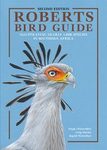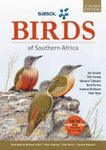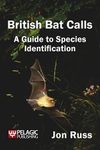![101 Curious Tales of East African Birds 101 Curious Tales of East African Birds]()
Click to have a closer look
About this book
Customer reviews
Biography
Related titles
About this book
Is there any bird as dishonest as the Fork-tailed Drongo? Did you know that the Tawny Eagle is an 'obligate Cainist'? And what of the irresistible-to-predators and highly cryptic Spotted Thick-knee?
East Africa's birds are extraordinary in their evolution, diversity and behaviour, often proving to be the unexpected highlight of a safari. Lavishly illustrated with beautiful photographs of each species, this book tells the fascinating, surprising, amusing stories of 100 regularly encountered birds – whether iconic or unjustly overlooked. In the process, the reader is introduced to ornithology in East Africa through the eyes of a passionate birder and professional ornithologist.
Filling a niche between field guide and textbook, 101 Curious Tales of East African Birds offers a wealth of information, including insights on the evolution of birds, the distributions and migrations of species, bird adaptations and senses, their lifecycle, ecology and conservation, as well as cultural and historical associates – each collated and referenced with the latest scientific papers. The author's deep understanding of this region's avifauna ensures that there is be new and engaging material for all, whether you have a general interest in wildlife or are a dedicated birder.
Customer Reviews (1)
-
Odd title, good content
By
Keith
30 Mar 2024
Written for Paperback
One of the great things about Africa is that of the approximately 2500 bird species recorded there, around 1400 are endemic and many are very distinctive in more ways than just plumage. This book tells their stories by using 101 different ornithological terms – such as sexual dimorphism and mimicry. However, the book’s title led me to think that this was going to be full of curious tales, maybe connected with ancient African beliefs and perceptions. However, it is sub-titled A Brief Introduction to Tropical Ornithology and the contents were more interesting than the main title had suggested.
The author is well-known in African ornithological circles and he is Professor of Ecology and Conservation Biology at the University of York. Although his experience in Africa is considerable he is mostly associated with East Africa, and although most of the species featured in this book have wide African distributions the title restricts them to East Africa. Personally, I would have widened the remit to the whole of Africa.
Each entry has a double-page spread with around 300 words of text explaining how that is special is connected to the relevant term and this faces a large photograph of the species in question, while the left-hand page has a further smaller photograph. Although some of these images were taken by the author, this is a collection of excellent photographs from nearly 40 photographers. This imagery and text work well to create a book that you can simply pick up and read for a few minutes and then come back to again.
The topics covered range from being very precise such as reversed sexual dimorphism (Greater Painted-snipe Rostratula benghalensis) and flightlessness (Common Ostrich Struthio camelus) to more general issues including tropical avian diversity (here the Beautiful Sunbird Cinnyris pulchellus is used to show how it and many other sunbirds have learnt how to extract nectar from flowers). The physical features of African birds are particularly interesting, such as the large number that have colourful plumages (here the Lilac-breasted Roller Coracias caudatus is used as the example, stressing that songbirds of tropical regions have around 20-30% more colours than those of temperate regions. Similarly, there are good examples of how African birds use their eyesight, with ultraviolet vision being an asset that some birds use (although not raptors like the Augur Buzzard Buteo augur that is featured to show that actually it does not need to see ultraviolet light to be a supreme hunter). However, the Gabar Goshawk Micronisus gabar is used as a great example of a bird that can detect movements faster than many others, while the Lappet-faced Vulture Torgos tracheliotos uses visual and aural signals when finding a carcass. There is also a section on the genitalia of the Cape Teal Anas capensis, explaining how the design of the male and female organs work well to either achieve (or prevent) fertilization. Personally, I have always been fascinated by bird vocalisations in Africa and there are both examples of duetting (the Red-and-Yellow Barbet Trachyphonus erythrocephalus is used as the example) and mimicry (Red-capped Robin-chat Cossypha natalensis being a master at this form of vocalisation). Another interesting aspect is how African birds deal with the venom of the many insects they need to deal with. Some, such as the Black-chested Snake-eagle Circaetus pectoralis (along with other snake-eagles) appears to be immune to snake venom. While the Little Bee-eater Merops pusillusis is used as an example of a bird that learns to remove the sting from bees before consuming them. A sting to a bird of that size would most likely be fatal, so quick learning is essential. The Common Bulbul Pycnonotus barbatus is capable of eating many toxic insects, and similarly the Common Quail Coturnix coturnix eats some toxic plants that have no known impact on the bird – although can have an impact on a human who chooses to eat them. Apparently “coturnism” is surprisingly common as an illness among those who eat quails. This was a new term for me.
Finally, there are examples of species that migrate both within and outside of Africa, and others that may be either positively or negatively affected by climate change. This book is informative, relevant and interesting, and the text is engaging on subjects that some readers may not already be familiar with.
Was this helpful to you? Yes No
Biography
Past Chair of the Pan-African Ornithology Congress’s Scientific Committee, Dr Colin Beale is a Reader in Ecology at the University of York, where he studies spatial ecology, ornithology and conservation biology, often in East Africa. With 25 years of experience living and working in East Africa, he is happiest with a cold beer in one hand, binoculars in the other and a good birding view.






































